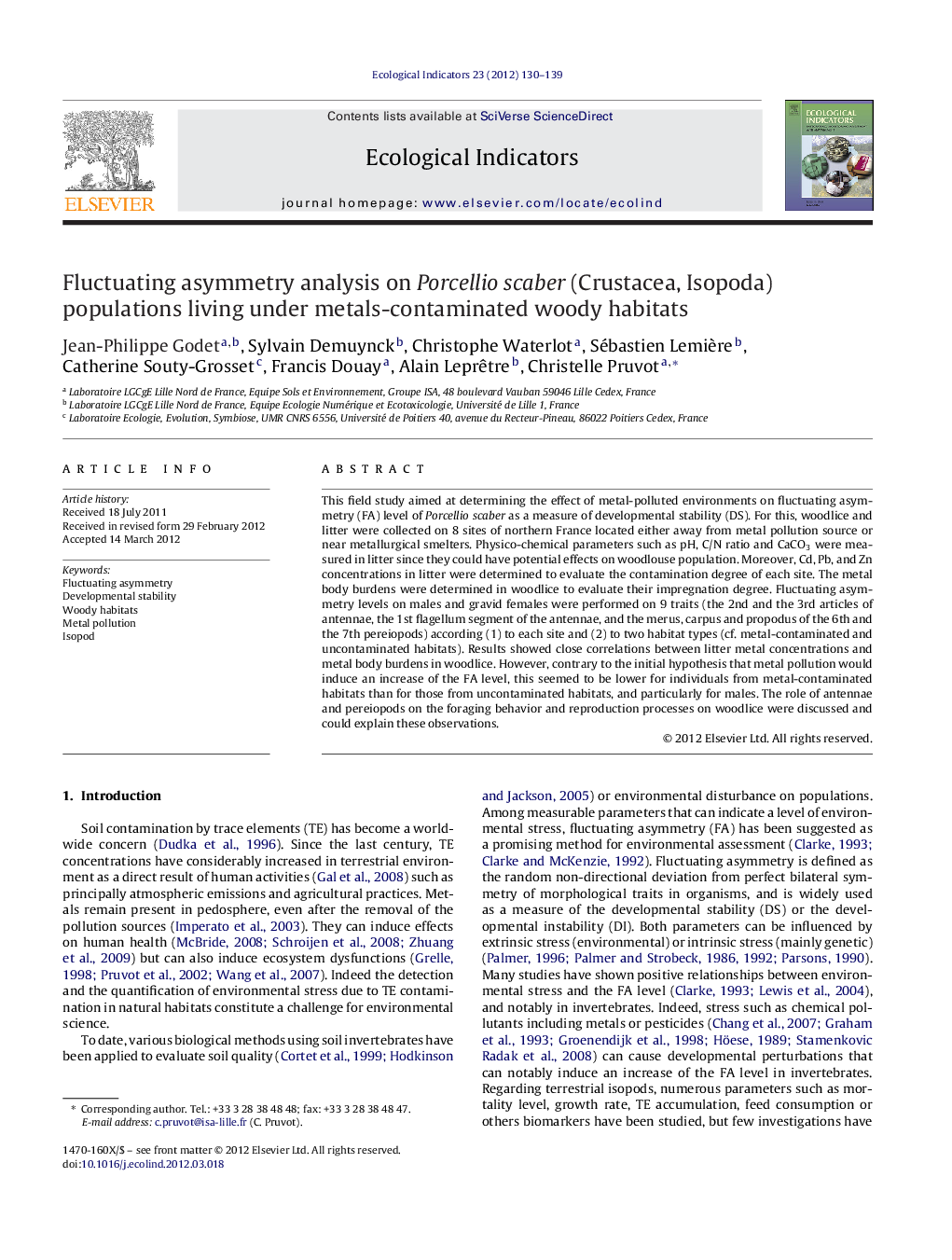| کد مقاله | کد نشریه | سال انتشار | مقاله انگلیسی | نسخه تمام متن |
|---|---|---|---|---|
| 6295541 | 1617177 | 2012 | 10 صفحه PDF | دانلود رایگان |
عنوان انگلیسی مقاله ISI
Fluctuating asymmetry analysis on Porcellio scaber (Crustacea, Isopoda) populations living under metals-contaminated woody habitats
دانلود مقاله + سفارش ترجمه
دانلود مقاله ISI انگلیسی
رایگان برای ایرانیان
کلمات کلیدی
موضوعات مرتبط
علوم زیستی و بیوفناوری
علوم کشاورزی و بیولوژیک
بوم شناسی، تکامل، رفتار و سامانه شناسی
پیش نمایش صفحه اول مقاله

چکیده انگلیسی
This field study aimed at determining the effect of metal-polluted environments on fluctuating asymmetry (FA) level of Porcellio scaber as a measure of developmental stability (DS). For this, woodlice and litter were collected on 8 sites of northern France located either away from metal pollution source or near metallurgical smelters. Physico-chemical parameters such as pH, C/N ratio and CaCO3 were measured in litter since they could have potential effects on woodlouse population. Moreover, Cd, Pb, and Zn concentrations in litter were determined to evaluate the contamination degree of each site. The metal body burdens were determined in woodlice to evaluate their impregnation degree. Fluctuating asymmetry levels on males and gravid females were performed on 9 traits (the 2nd and the 3rd articles of antennae, the 1st flagellum segment of the antennae, and the merus, carpus and propodus of the 6th and the 7th pereiopods) according (1) to each site and (2) to two habitat types (cf. metal-contaminated and uncontaminated habitats). Results showed close correlations between litter metal concentrations and metal body burdens in woodlice. However, contrary to the initial hypothesis that metal pollution would induce an increase of the FA level, this seemed to be lower for individuals from metal-contaminated habitats than for those from uncontaminated habitats, and particularly for males. The role of antennae and pereiopods on the foraging behavior and reproduction processes on woodlice were discussed and could explain these observations.
ناشر
Database: Elsevier - ScienceDirect (ساینس دایرکت)
Journal: Ecological Indicators - Volume 23, December 2012, Pages 130-139
Journal: Ecological Indicators - Volume 23, December 2012, Pages 130-139
نویسندگان
Jean-Philippe Godet, Sylvain Demuynck, Christophe Waterlot, Sébastien Lemière, Catherine Souty-Grosset, Francis Douay, Alain Leprêtre, Christelle Pruvot,